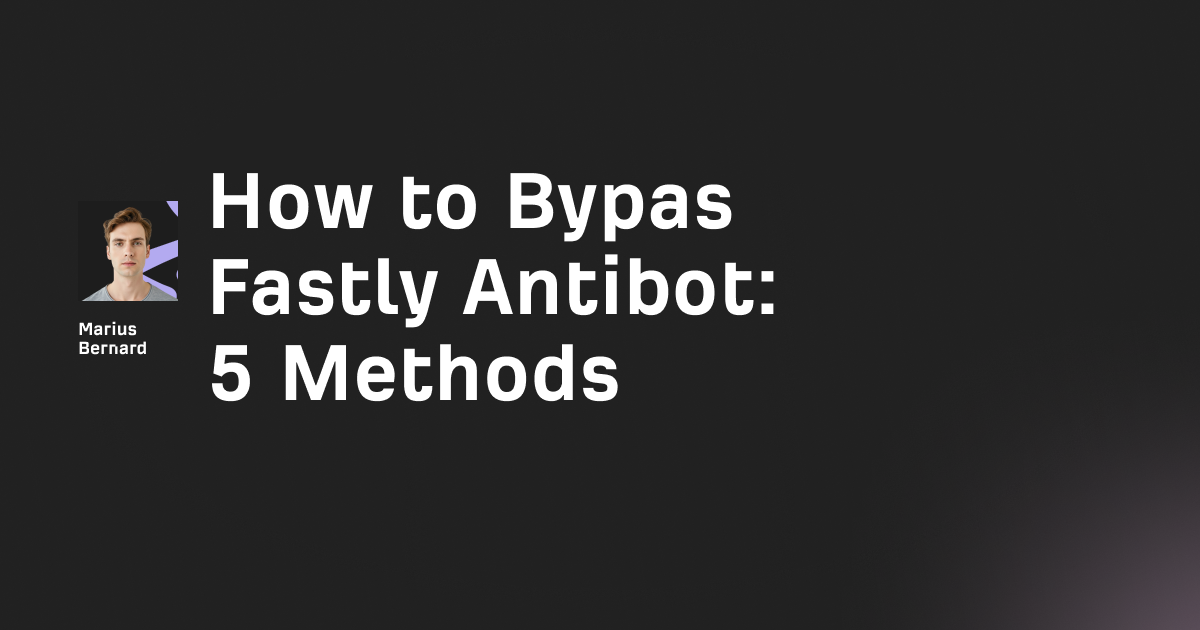Small libraries rarely make headlines, yet they’re often the backbone of high-traffic services you use every day. Needle is one of those unsung heroes—a lean HTTP client that ships with just two dependencies, slips neatly into any Node.js stack, and still finds room for features bigger frameworks brag about.
If you’ve ever stared at your bundle report and wondered why a simple fetch call drags half of npm along for the ride, this guide is for you.
Below, you’ll find everything you need to move from “npm install” to production-ready patterns—installation, basic requests, streaming tricks, AbortSignal timeouts, handcrafted retry loops, connection pooling, and a handful of easy-to-miss gotchas.
By the end, you’ll be able to replace heftier clients like Axios or node-fetch with a tool that does more while taking up less space.
Why Needle Deserves a Spot in Your Toolbox
Most HTTP clients promise convenience. Needle promises efficiency without trade-offs:
Tiny footprint. Two dependencies keep cold starts snappy on serverless platforms where every millisecond matters.
Smart parsing. JSON and XML payloads arrive as ready-to-use objects—no extra “JSON.parse” clutter.
On-the-fly decompression. Gzip, deflate, and brotli are handled automatically, saving bandwidth and headaches.
Native streams. Pull multi-gigabyte files without loading them fully into memory.
Multipart uploads. Mix files and fields in one request, no extra helper library required.
Proxy and auth support. Whether you’re behind a corporate gateway or hitting a token-secured API, configuration stays simple.
Custom agents. Keep-alive pools eliminate the cost of constant handshakes.
That combination is rare. Most libraries give you some of the above, but only after stacking extra plugins or sprinkling one-off utilities throughout your codebase. Needle folds it all into a single, battle-tested API that hasn’t ballooned in size since the day it launched.
Step 1 — Install Needle and Send Your First Request
Open a terminal and run:
npm install needleDone. No peer-dependency warnings, no post-install scripts downloading mystery binaries.
Now spin up a quick request using the promise style:
const needle = require('needle');
async function fetchUser() {
try {
const res = await needle('get',
'https://jsonplaceholder.typicode.com/users/1');
console.log(res.body); // Parsed JSON out of the box
} catch (err) {
console.error('Request failed:', err.message);
}
}
fetchUser();
Want a stream instead? Skip the await and call the verb directly:
const stream = needle.get('https://api.example.com/big.json');
stream.on('data', chunk => console.log(chunk.length));
Behind the scenes, both approaches share the same core engine. The only difference is what Needle gives back: a promise for convenience, or a readable stream for raw control.
Step 2 — Post JSON or Upload Files Like a Pro
Regular JSON payloads look exactly as you’d expect:
const data = { title: 'New Post', userId: 1 };
const res = await needle('post',
'https://jsonplaceholder.typicode.com/posts',
data,
{ json: true } // Serializes body + sets Content-Type
);
console.log('Created:', res.body.id);
The json: true flag does three things for you:
- Converts your object to a string.
- Adds the correct
Content-Type. - Parses the response back into an object.
Less ceremony, fewer things to forget during a late-night deploy.
Need to attach files? Pass an object that mixes plain fields with file descriptors:
const fs = require('fs');
const form = {
title: 'My Photo',
description: 'Vacation shot',
photo: {
file: './vacation.jpg',
content_type: 'image/jpeg'
}
};
await needle('post', 'https://example.com/upload', form, {
multipart: true
});
No temp directories, no external form-data builders. Needle reads the file, sets the boundaries, and moves on. If you already have a buffer—say you fetched the bytes from S3 first—swap file for buffer, name the filename, and you’re done.
const pdf = fs.readFileSync('./report.pdf');
await needle('post', 'https://example.com/docs', {
document: {
buffer: pdf,
filename: 'Q3-report.pdf',
content_type: 'application/pdf'
}
}, { multipart: true });
Step 3 — Stream Large Downloads Without Melting Your RAM
Here’s where Needle leaves many alternatives in the dust. Calling a verb method without a callback hands you a Node.js stream that pipes like any other:
const fs = require('fs');
const download = needle.get('https://files.example.com/big.zip');
const outFile = fs.createWriteStream('./big.zip');
download.pipe(outFile)
.on('finish', () => console.log('Download complete'))
.on('error', err => console.error('Stream error:', err));
Because chunks flow directly from socket to disk, memory stays flat. That’s life-saving when your Lambda function has 512 MB of headroom and the file tips the scale at 4 GB.
If you’re curious about progress, listen to data:
let total = 0;
download.on('data', chunk => {
total += chunk.length;
process.stdout.write(`\r${(total/1024/1024).toFixed(1)} MB`);
});
Need compressed content? Ask for it:
const res = await needle('get',
'https://api.example.com/huge',
{ compressed: true, parse: true }
);
Needle advertises support for gzip, deflate, and brotli, then silently inflates whichever one the server prefers.
Step 4 — Time-Outs and Cancellations That Actually Work
Stuck sockets are subtle bugs; they don’t fail loudly, they just sit there eating connections. Needle offers two layers of defense: classic open_timeout/read_timeout settings and modern AbortSignal cancellation.
Classic timeouts:
await needle('get', 'https://api.example.com/data', {
open_timeout: 5_000, // Wait five seconds for the socket to connect
read_timeout:10_000 // Wait ten seconds between data chunks
});
AbortSignal pattern:
const controller = new AbortController();
setTimeout(() => controller.abort(), 5_000);
try {
await needle('get', 'https://slow.example.com', {
signal: controller.signal
});
} catch (err) {
if (err.name === 'AbortError') {
console.log('Request cancelled after 5 s');
} else {
throw err;
}
}
Node 16+ gives you syntactic sugar with AbortSignal.timeout:
await needle('get', 'https://api.example.com', {
signal: AbortSignal.timeout(3_000)
});
Pair one approach with the other for belt-and-suspenders safety: open/read limits catch network stalls, while AbortSignal lets calling code yank the plug whenever it chooses.
Step 5 — Roll Your Own Retry Logic (In 30 Lines)
Needle purposely stays neutral on retries. That’s good news, because every backend has its own definition of “retry-worthy.” Below is a lightweight helper that retries on server hiccups or network fizzles, skips client mistakes, and backs off exponentially:
async function retryNeedle (
method,
url,
body = null,
opts = {},
tries = 3
) {
let lastErr;
for (let n = 0; n < tries; n++) {
try {
const res = await needle(method, url, body, {
...opts,
signal: AbortSignal.timeout(5_000)
});
if (res.statusCode >= 200 && res.statusCode < 300) {
return res;
}
if (res.statusCode >= 400 && res.statusCode < 500) {
// Caller error—don’t retry
throw new Error(`Client error: ${res.statusCode}`);
}
lastErr = new Error(`Server error: ${res.statusCode}`);
} catch (err) {
lastErr = err;
if (err.name === 'AbortError') {
// Fine—fall through to retry below
}
}
// Last loop? break.
if (n === tries - 1) break;
const delay = (2 ** n) * 1_000 + Math.random() * 500;
console.log(`Retry ${n + 1}/${tries} in ${delay} ms`);
await new Promise(r => setTimeout(r, delay));
}
throw lastErr;
}
Call it like this:
try {
const res = await retryNeedle('get',
'https://sometimes-flaky.example.com/data');
console.log(res.body);
} catch (err) {
console.error('All retries failed:', err.message);
}
A quick recap: the first retry waits roughly one second, the next about two, and the last around four—plus a sprinkle of jitter to stop dozens of workers from hammering the same server all at once.
Step 6 — Squeeze More Speed with Connection Pools
Each fresh HTTPS connection pays a three-way TCP handshake and a full TLS negotiation. Multiply that by thousands of calls per minute and the latency tax adds up. Custom agents keep soldering irons on those sockets so your app can reuse them:
const https = require('https');
const apiAgent = new https.Agent({
keepAlive: true,
maxSockets: 50, // Parallel sockets per host
maxFreeSockets: 10, // Idle sockets to keep warm
timeout: 60_000 // Destroy if idle for a minute
});
function pooledGet(url, extra = {}) {
return needle('get', url, { ...extra, agent: apiAgent });
}
Real-world savings: a busy microservice at a fintech client shaved 4.3 seconds off a 120-call batch job simply by switching from default sockets to a shared agent. Same logic, faster throughput.
Different services? Spin up separate agents:
const cacheAgent = new https.Agent({ keepAlive: true, maxSockets: 100 });
const slowAgent = new https.Agent({ keepAlive: true, maxSockets: 10 });
await needle('get',
'https://cache.example.com/hit',
{ agent: cacheAgent });
await needle('get',
'https://rate-limited.example.com/data',
{ agent: slowAgent });
When your process shuts down gracefully—think Kubernetes SIGTERM—destroy the agents to flush keep-alive handles:
process.on('SIGTERM', () => {
apiAgent.destroy();
cacheAgent.destroy();
slowAgent.destroy();
process.exit(0);
});
Step 7 — Navigate Proxies and Authentication with Minimal Fuss
Corporate proxy in the middle? Point Needle toward it:
await needle('get', 'https://api.example.com/data', {
proxy: 'http://proxy.corp.local:8080'
});
Proxy credentials follow the standard URL pattern:
proxy: 'http://alice:secret@proxy.corp.local:8080'
Basic or Digest auth against the target API itself:
await needle('get',
'https://secure.example.com/private',
{
username: 'alice',
password: 'correct-horsebattery-staple',
auth: 'auto' // Chooses Basic or Digest based on server
});
Bearer tokens remain just a header away:
await needle('get', 'https://api.example.com/data', {
headers: { Authorization: `Bearer ${token}` }
});
Common Snags (and the Easy Fixes)
Streams without error handlers — Always listen for 'error'; otherwise the garbage collector can’t free the socket.
const s = needle.get(url);
s.on('error', err => {
console.error(err);
s.destroy();
});
Mixing await and callback — Pick one style. Awaiting a call that also uses a callback means the callback never fires.
Forgotten status checks — Needle doesn’t throw on HTTP 500. Add your own guard:
if (res.statusCode >= 400) {
throw new Error(`HTTP ${res.statusCode}: ${res.body.message || res.body}`);
}
Missing Content-Type on JSON posts — Always flip json: true; otherwise your object becomes an ugly query string.
Using default timeouts — They’re generous on purpose. Tighten them to suit your SLA.
A Quick Story from the Trenches
A midsize SaaS company we work with runs a batch system that pulls nightly CSV exports from dozens of customer S3 buckets, converts them to JSON, and pushes the results into Redshift.
Their first cut used Axios. Everything ran smoothly—until finance asked for a cost breakdown. Cold starts in AWS Lambda were costing them an extra $210 per month because each 100-MB bundle took longer to unzip and warm.
Swapping Axios for Needle brought the packaged function size down by 24 MB. Cold start time dropped from 1.9 s to 1.2 s, and memory usage fell far enough to let them halve the Lambda size tier. Annual savings: roughly $2,800. Effort: one afternoon of refactoring request calls and adding an agent for pooling.
Wrap-Up and Next Moves
Needle proves you don’t need a heavyweight client to enjoy modern comforts like streaming, retries, or multipart uploads. You get lean bundles, faster cold starts, and readable code without sacrificing features the rest of the stack depends on.
Ready to lighten your HTTP layer? Install Needle today, refactor a single endpoint, and measure the difference. Odds are you’ll never want to lug a heavier client around again.








